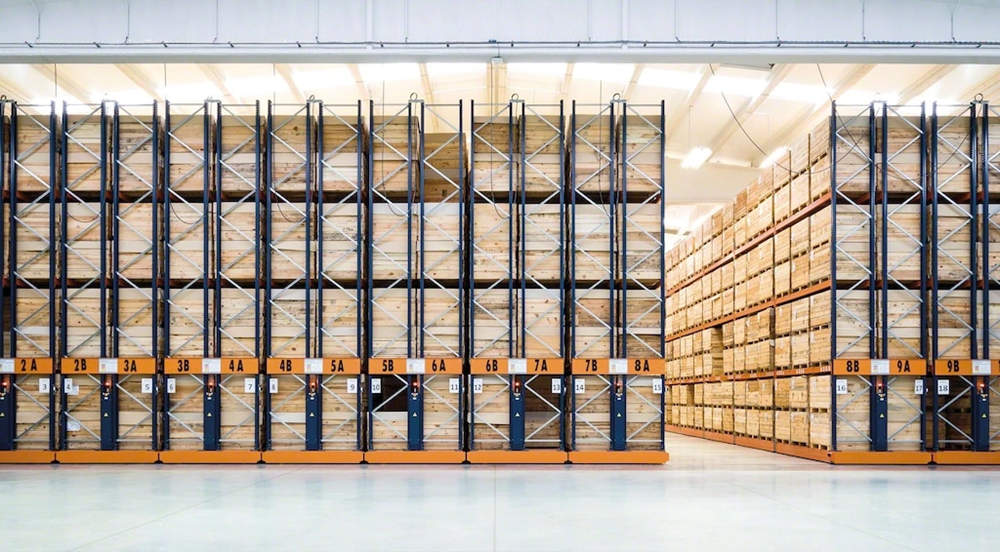
Businesses lose more money than they think due to inefficient warehouse racks. Research reveals that poor racking wastes up to 20% of usable space in North American warehouses. This wasted space could boost storage capacity and make operations run smoother.
Smart warehouse pallet racking layouts are the foundations of high-performing operations. Different racking systems can transform space usage in warehouses. Each system offers unique solutions based on inventory needs. Drive-in racks make the most of warehouse space – they use up to 70% of available area and fit 75% more pallets than selective racking systems in equal spaces. The space between racks needs careful planning too. Narrow gaps slow down productivity when forklifts wait to pass, while wide gaps waste valuable floor space.
Modern warehouse racking solutions help businesses adapt to market changes and succeed. Companies can boost storage density and cut operational costs with smart layouts that follow safety standards. This piece shows seven tested warehouse rack layouts that help businesses save space and run better operations in 2025.
Selective Pallet Racking Layout
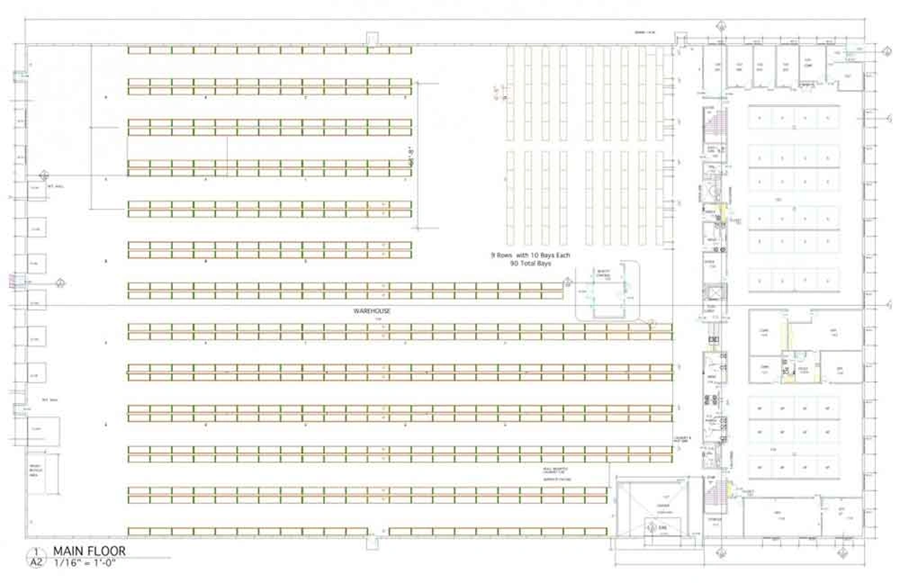
Selective pallet racking is the lifeblood of modern warehouse storage solutions and represents the most widely used system in distribution centers and warehousing facilities nationwide. This basic storage method lets you access every stored pallet without moving others, which makes it a foundation many warehouse operations rely on.
Selective pallet racking layout overview
The structure of selective pallet racking is straightforward. It uses vertical uprights (frames) and horizontal beams to create shelves for palletized goods. This modular system creates storage rows with aisles between them. Forklifts can move freely and reach any pallet position directly. Each pallet has its own shelf level, which creates a storage grid that maximizes vertical space while keeping all products easily available.
Selective racking’s beauty comes from its simple and adaptable nature. You can adjust beam levels to fit different pallet sizes and product heights, letting warehouse managers customize their storage based on what they need. The system also allows quick changes when requirements shift. Teams can take apart, move, and reinstall components with minimal disruption to daily work.
The open design sets selective pallet racking apart. It offers better visibility, boosts safety, and allows air to flow throughout the storage area. This clear view makes inventory management easier because staff can spot products quickly without searching through stacked pallets.
How selective pallet racking saves space
Selective pallet racking needs wider aisles than some other systems. Yet it still offers excellent space optimization through several smart approaches:
- Vertical space utilization: The system extends upward instead of outward. This approach takes full advantage of warehouse ceiling height and increases storage capacity without needing a bigger facility footprint.
- VNA configuration: Very Narrow Aisle (VNA) versions of selective pallet racking make work aisles smaller by using specialized forklifts that need less turning space. This setup keeps complete pallet access while improving space use by up to 40% compared to standard layouts.
- Double-deep arrangement: Storage density can increase with double-deep arrangements where pallets sit two-deep from the aisle. This hybrid approach trades some direct access for higher storage density.
- Mobile bases: Advanced selective racking can sit on mobile bases that move sideways. This setup eliminates the need for multiple permanent aisles and creates a compact, high-density storage solution.
Warehouse selective pallet configurations need the right balance between access and space efficiency. Standard systems typically need 10-12 foot aisles for regular forklifts. VNA systems can work with 6-foot aisles when using specialized equipment.
Best use cases for selective pallet racking
Selective pallet racking works best in specific operational environments, especially those needing frequent access to various inventory items. Here are the ideal applications:
- Retail distribution centers: Places managing many SKUs that need quick access benefit from selective racking’s direct access design. This setup supports fast order fulfillment and inventory rotation.
- E-commerce operations: This system’s high selectivity is crucial for e-commerce fulfillment. Orders typically include many different items that need efficient picking.
- Manufacturing plants: Production facilities often need quick access to raw materials and components. Selective pallet racking supports continuous product movement and high turnover rates.
- Warehouses with high SKU diversity: Operations storing many different product types in smaller quantities per SKU find this system ideal. It provides direct access to each unique item.
- Facilities implementing FIFO inventory: The system naturally supports First-In-First-Out inventory management. This makes it perfect for products with expiration dates or when stock rotation matters.
Selective pallet racking remains the top choice for operations that value accessibility and flexibility over maximum storage density. The system’s adaptability and lower upfront investment cost compared to automated solutions make it the life-blood of warehouse racking strategies.
Double-Deep Racking Layout
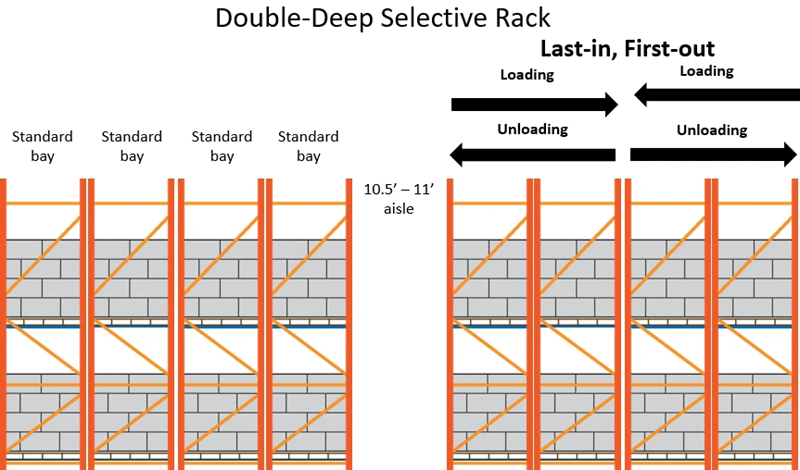
Double-deep racking systems strike a balance between regular selective racking and high-density storage solutions. This groundbreaking warehouse storage approach boosts capacity while keeping goods accessible. More operations now choose this system to tap into their facility’s full storage potential.
Double-deep racking layout overview
Double-deep racking uses a pallet storage setup where goods sit two pallets deep on both sides of a central aisle. Unlike selective pallet racking that gives direct access to every pallet position, double-deep systems stack pallets at two depths. This setup increases storage density but keeps inventory access simple.
The basic structure looks like standard selective pallet racking arranged back-to-back for double-depth storage. You can install up to four pallet rack assemblies back-to-back-to-back-to-back, which creates double-deep storage on each side of the aisleway. Getting to the second pallet needs special equipment—usually a deep-reach forklift truck with telescoping forks that reach past the front pallet to grab the rear one safely.
The structure keeps many advantages of selective racking systems. It’s easy to put together, adjust load levels, and adapt to different weights or volumes. The system works as a Last-In-First-Out (LIFO) storage method because you can only directly access front unit loads.
How double-deep racking saves space
Double-deep racking’s biggest advantage is its dramatic boost in storage density. This setup instantly frees up square footage by cutting required aisles by about 50% compared to standard selective pallet rack layouts.
This design choice leads to impressive results—storage capacity can jump 40-50% within the same warehouse footprint compared to selective racking. This big increase in capacity can transform finances for businesses facing pricey expansion or high lease rates.
Double-deep racking also helps you:
- Cut aisles in half to use warehouse space better
- Use 80-90% of available spots, which beats many other options
- Need fewer aisles while keeping 50% of goods within quick reach
- Handle unit loads faster for quicker stock rotation
Space optimization really shines in facilities that can’t expand easily or in areas with expensive real estate. Double-deep racking bridges the gap between selective and compact storage systems through its innovative design.
Best use cases for double-deep racking
Double-deep racking’s unique mix of density and accessibility makes it perfect for specific operations. The system works best for:
- Cold storage facilities – The system cuts down expensive aisle space that needs cooling, which saves space and energy costs
- Warehouses with medium to long-term inventory – The LIFO system works great for goods that don’t expire quickly
- Homogeneous product storage – This setup helps warehouses storing similar products or those with multiple pallets per SKU
- E-commerce fulfillment centers – Warehouses can store more similar SKUs in less space by reducing aisle widths
- Manufacturing operations – Raw materials near production lines benefit from denser storage while staying accessible
However, double-deep racking might not suit warehouses that need direct access to every pallet or those handling perishables that require strict FIFO (First-In-First-Out) inventory management.
The system shines in retail distribution settings where it supports quick replenishment cycles and maximizes space, especially in urban warehouses with limited room. Many facilities use a mixed approach—selective racking for fast-moving items and double-deep setups for slower inventory.
Drive-In Racking Layout
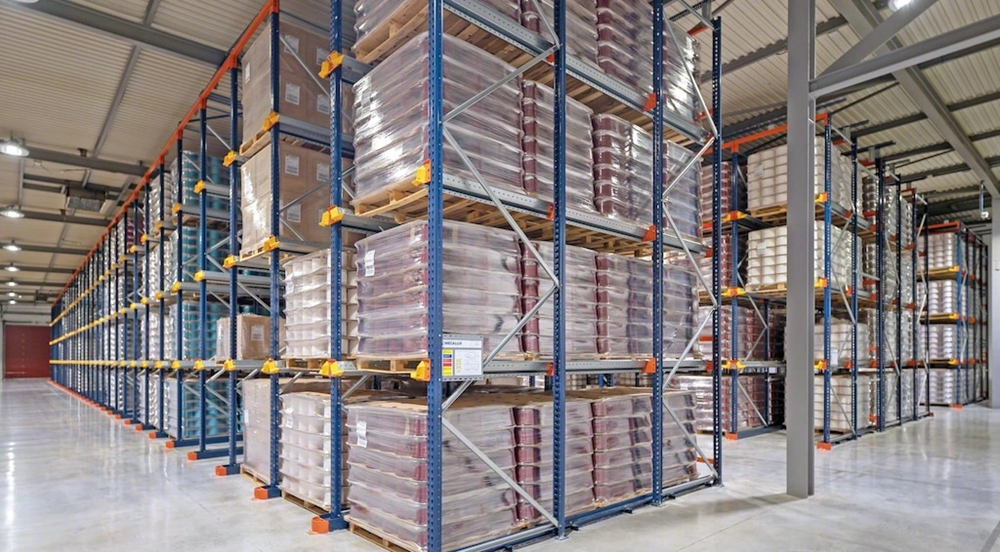
Drive-in racking systems rank among the most space-saving storage solutions in modern warehousing. These systems are the life-blood of high-density storage for facilities that handle large quantities of similar products. Businesses looking to maximize their storage footprint have made this system a key option where maximum compaction matters more than quick access.
Drive-in racking layout overview
The structure of drive-in racking creates a high-density storage system that needs fewer forklift aisles because lift trucks can go straight into the rack lanes. This compact setup doesn’t need aisles between rack rows like selective or double-deep systems do. Instead, it creates a solid storage block you can access from one or both ends.
You’ll find two main configurations of this system. The first type has a single access aisle where the last load in becomes the first one out (LIFO). The second type lets you access from both ends, which means first-in-first-out (FIFO) inventory flow. Both types share the same basic structure with vertical frames, horizontal beams, pallet rails, and guide rails.
This system’s structural design sets it apart. Rather than storing pallets on beams like selective racking does, drive-in systems use rails that run perpendicular to the picking aisle. This design removes cross beams between uprights and creates clear vertical lanes where forklifts can place or retrieve pallets deep within the storage block.
How drive-in racking saves space
The space-saving power of drive-in racking stands out. This is a big deal as it means that space utilization can go beyond 80%. You can achieve the same storage capacity in 80% less space compared to selective rack systems.
Here’s why these systems save so much space:
- Elimination of multiple aisles – You only need one access aisle (or two for drive-through setups), which removes the need for paths between racks
- Maximized floor and height utilization – The setup makes the most of available surface area and vertical space
- Compact storage design – Products sit back-to-back and floor-to-ceiling in a dense storage block
- Energy efficiency – A smaller footprint means less surface area needs temperature control in cold storage facilities, which saves energy
The benefits go beyond just saving space. These systems cut down storage and retrieval time while helping workers be more productive. The dense storage pattern also means less air to heat or cool between pallets, which helps save even more energy.
Best use cases for drive-in racking
Drive-in racking works best in specific situations. The system shines in:
- Homogeneous product storage – Warehouses with large quantities of similar items benefit most since each lane usually holds one SKU
- Cold storage facilities – The system’s compact nature makes it a popular choice in freezers and cold rooms by minimizing expensive temperature-controlled space
- Low-rotation inventory – Products that don’t move often and non-perishable goods work well with the LIFO setup
- Space-constrained operations – Facilities with limited space or high real estate costs find great value in drive-in racking
- Bulk storage needs – Manufacturing operations with lots of raw materials or distribution centers handling large amounts of similar products
However, this system isn’t ideal for operations that need frequent access to various inventory items. Since you can’t directly access all pallets, drive-in racking works best when space matters more than selectivity.
Facility managers should ensure proper operator training because these compact systems require precise handling skills. Quality pallets of uniform size are also crucial for safe and efficient operation.
Push-Back Racking Layout
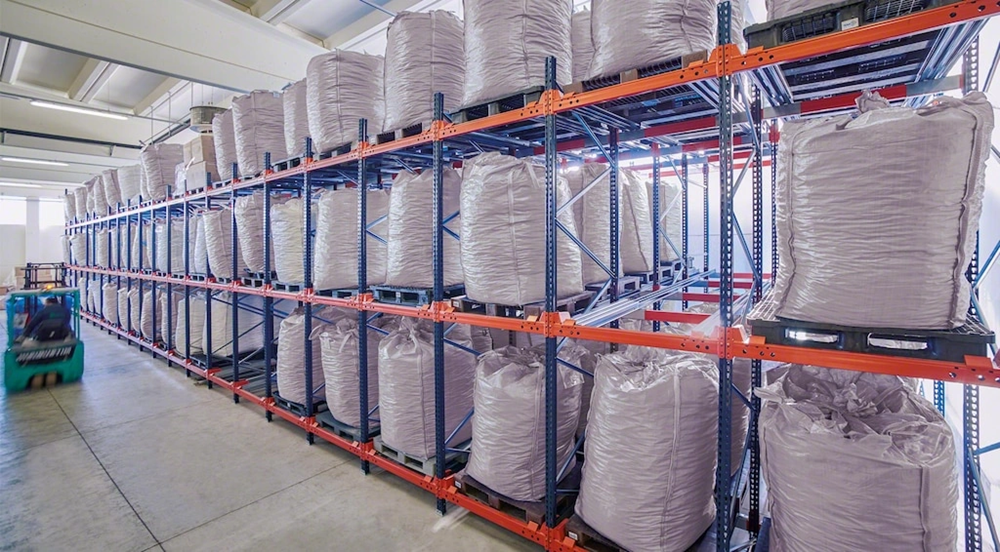
Push-back racking gives warehouses a perfect blend of high-density storage and impressive selectivity. Warehouse managers choose this popular option to maximize their storage capacity without losing accessibility. The system helps businesses store more products in fixed spaces and leads to significant space savings.
Push-back racking layout overview
The system works with a series of nested carts that roll on inclined rails. This creates a storage system that operates on the LIFO (Last-In, First-Out) principle. The first pallet sits on the first cart during loading from the front. Each new pallet load pushes the previous one back one position on the track. You can store 2-6 pallets deep based on your configuration.
Forklift operators never need to enter the rack structure. They simply lift the front pallet and reverse slowly. The next pallet then rolls forward into the picking position through gravity. A single working aisle provides all the access needed, which removes the need for multiple access paths.
The structure features slightly inclined rails with nested carts that take up minimal vertical space. A six-deep setup needs only 6-1/4″ of vertical bay height. All but one of these pallets rest on their own cart, while the last pallet sits directly on the rails. This design ensures exceptional stability and makes efficient use of vertical cube space.
How push-back racking saves space
The storage density increases dramatically as push-back racking replaces multiple selective rack aisles with compact storage lanes. Your facility can store up to 90% more pallets than selective racking in the same footprint. The system provides 2-3 times more storage space compared to standard selective rack.
Several factors contribute to the system’s space efficiency:
- Elimination of multiple access aisles: A single aisle handles both loading and unloading, which increases available storage area
- Vertical cube utilization: The design maximizes both horizontal and vertical warehouse space
- Reduced aisle requirements: More floor space goes to actual storage rather than access paths
- Compact storage depths: Storage of 2-6 pallets deep maximizes density while keeping selectivity intact
Warehouse managers can store more inventory without expanding their facility. This reduces real estate costs and delays expensive warehouse enlargements. The system tackles today’s warehouse challenge of storing more pallets with diverse products in fixed spaces.
Best use cases for push-back racking
Some operational environments make perfect use of push-back racking. Here are the ideal applications:
- Food and beverage distribution: The combination of high-density storage and good selectivity benefits wholesale food distributors, frozen food warehouses, and beverage producers
- Retail distribution centers: The density and accessibility help facilities handle seasonal surges
- Cold storage facilities: Space optimization in expensive temperature-controlled environments reduces overall refrigeration costs
- 3PL operators: Third-party logistics providers need flexible, dense storage for multiple clients
- High-turnover inventory operations: Quick loading and unloading capabilities benefit warehouses with frequent product turnover
The system works best with SKUs that need multiple pallet storage and medium turnover rates. This includes retail cases, seasonal products, and fast-moving consumer goods. Operations in high-rent metropolitan areas benefit from the space optimization capabilities.
The LIFO inventory management method means newer stock comes out before older inventory. This makes push-back racking most effective for homogeneous non-perishable products or items with longer expiration dates.
Pallet Flow Racking Layout
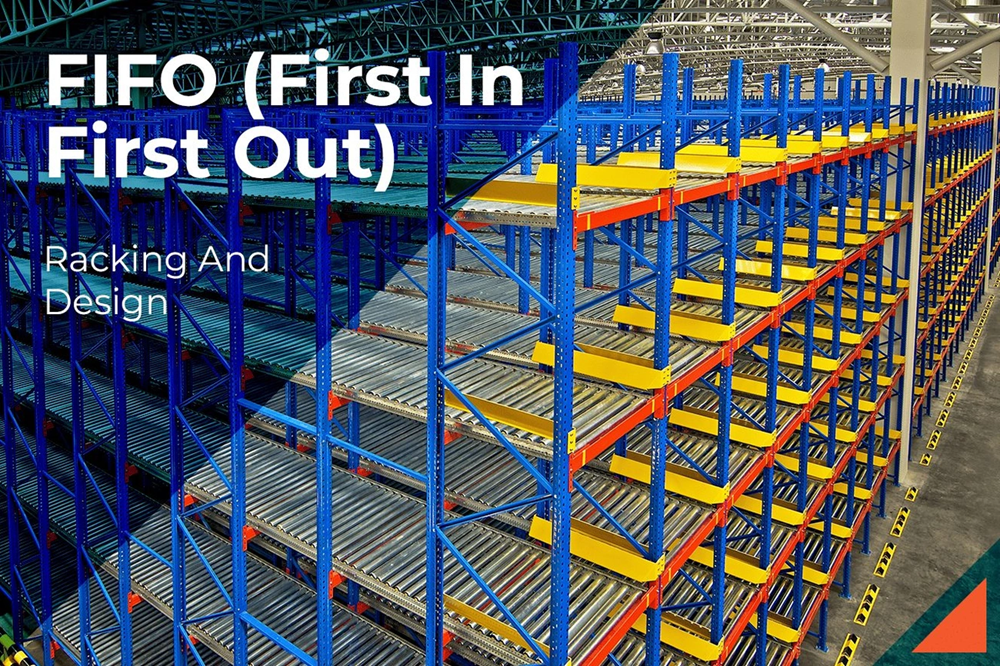
Pallet flow racking stands out as a smart choice for warehouses that need both space efficiency and inventory control. This storage solution combines space optimization with efficient inventory management. It proves especially valuable when operations handle time-sensitive products.
Pallet flow racking layout overview
Gravity powers the simple yet effective principle behind pallet flow racking. The system uses slightly tilted lanes with rollers or wheels. Pallets slide smoothly from the loading end to the unloading end. This smart design creates a First-In-First-Out (FIFO) inventory flow. The oldest stock naturally moves to the front position for retrieval.
Each pallet flow rack has inclined tracks with carefully placed skate wheels or rollers on a gentle slope. These parts work with built-in braking systems to control pallet speed toward the pick face. The load end (charge end) sits at the highest point. It angles down to the unload end (discharge end), creating the right slope for pallet movement.
The setup can store between 2 and 20+ pallets deep, based on warehouse needs. This depth turns traditional racking into a powerhouse of high-density storage.
How pallet flow racking saves space
Several features make pallet flow racking highly space-efficient:
- Dramatic storage density increases: These systems can double storage capacity compared to static rack systems. They use deep lanes and vertical space effectively.
- Minimized aisle requirements: The design needs only loading and unloading aisles. This eliminates multiple access paths between rows.
- Optimized vertical utilization: Well-designed pallet flow racks use a warehouse’s full height potential.
- Reduced floor footprint: These systems can cut required warehouse square footage in half through maximized storage density.
Space benefits go beyond storage capacity. Warehouses can store more inventory with fewer aisles. The automatic flow system cuts travel time and saves up to 75% in labor and equipment costs.
Best use cases for pallet flow racking
Pallet flow racking works best in operations where inventory rotation and space efficiency matter most:
- Food and beverage industry: FIFO systems help rotate perishable items efficiently. This reduces spoilage risk and supports better inventory management.
- Pharmaceutical and medical supplies: Time-sensitive products need controlled inventory flow and proper rotation.
- Cold storage facilities: Dense storage helps reduce utility costs in expensive temperature-controlled spaces.
- Distribution centers with high-volume SKUs: Single SKUs can fill entire lanes in warehouses handling large product quantities.
- Manufacturing supply areas: Raw material storage and inventory rotation become more efficient with these systems.
Pallet flow racking systems cost more upfront than selective pallet racks due to rollers and brakes. However, high-throughput operations often find this investment worthwhile. The efficiency gains directly boost profitability.
Cantilever Racking Layout
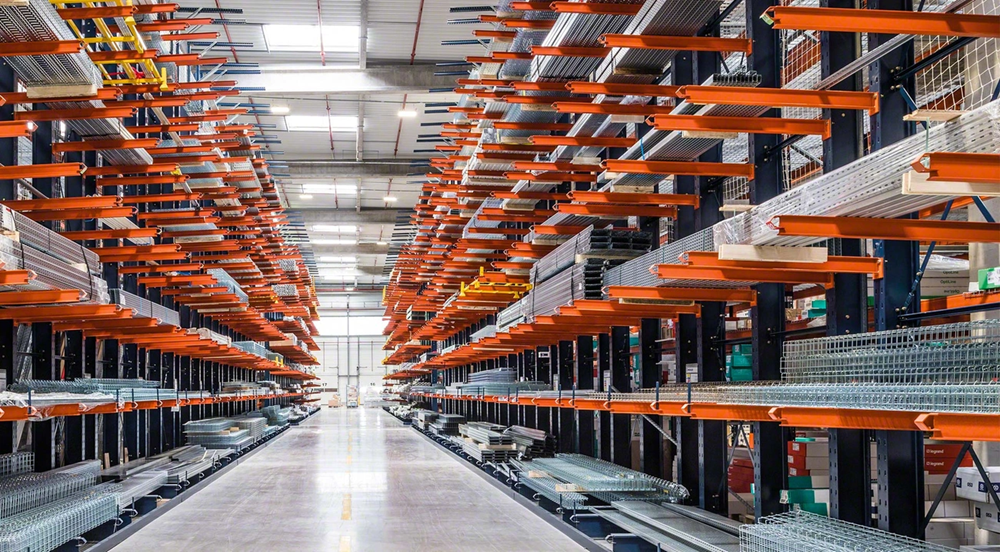
Cantilever rack systems are great at handling long, bulky, and irregularly shaped items that regular racking systems can’t manage well. The open-front design gives exceptional access to items that would take up valuable floor space if stored horizontally.
Cantilever racking layout overview
Cantilever racking has a simple yet reliable design. Vertical columns attach to sturdy bases while horizontal arms extend outward. The design skips front posts along the aisle to optimize space and lets workers access inventory right away. This open structure makes it easy to store oddly shaped or sized goods without space limits.
The system comes in two versions – single-sided configurations that go against walls and double-sided options you can access from both sides. This gives you plenty of flexibility in warehouse layout design. Each arm’s capacity changes based on what you need to store. The columns can handle anywhere from 227 to 27,215 kilograms (500 to almost 60,000 pounds), depending on how strong the arms are.
How cantilever racking saves space
Cantilever racking makes better use of space in several ways:
- Vertical space maximization – The system turns empty overhead areas into storage zones without making your warehouse bigger
- Minimal floor footprint – The slim profile lets you store lots of bulky goods in a small floor space
- Wall utilization – Single-sided racks work great against solid structures like walls
- Adjustable configuration – You can change the arms’ length and angle to use the space better
Sometimes, adding cantilever racking helps avoid warehouse expansion or layout changes, which gives you more storage space. On top of that, it’s easy to spot and grab inventory thanks to the open design, no matter how big your warehouse is.
Best use cases for cantilever racking
Cantilever racking shines in specific situations where standard pallet racking just doesn’t cut it. Here are the main uses:
Building materials storage benefits hugely from cantilever’s design – think lumber, steel pipes, bars, sheets, rebar, and lintels. The automotive and heavy equipment industries love it for storing big parts like engines, axles, and transmissions. Retail and wholesale outlets employ cantilever’s flexibility for bulky inventory that moves fast.
Cantilever racking works great for carpet rolls, trusses, and other long materials that would eat up too much floor space. Businesses that handle non-uniform or lengthy materials find cantilever racking essential. It’s a perfect mix of easy access and space efficiency.
Mobile Racking Layout
Mobile racking systems stand out as one of the most innovative storage solutions. These systems streamline warehouse processes by mounting standard racks on motorized bases that move along floor rails. The design eliminates fixed aisles and creates a groundbreaking approach to space usage.
Mobile racking layout overview
The system features pallet racks mounted on motorized carriages that slide sideways on embedded floor rails. An electronic control system opens the needed aisle and closes it after the work is done. Each bay can support up to 32 metric tons, while carriages handle loads up to 600 metric tons. The racks reach heights of 16.5 meters in areas without earthquake risks.
How mobile racking saves space
Mobile racking offers significant space advantages through these key features:
- One operational aisle serves all storage needs, eliminating fixed aisles
- Storage capacity jumps 40-60% compared to static systems
- Space efficiency improves by about 45%
- Warehouse capacity can expand up to 90%
Best use cases for mobile racking
Several scenarios showcase mobile racking’s value effectively. Temperature-controlled logistics environments benefit greatly as compact storage reduces cooling volume requirements. Logistics providers appreciate both capacity optimization and flexible handling options. Manufacturing facilities that prioritize space savings over quick inventory turnover find these systems perfect. Sites with high real estate costs or limited expansion options see faster investment returns.
Comparison Table
| Rack Type | Space Savings | Access Type | Best Use Cases | Key Features | Storage Depth |
|---|---|---|---|---|---|
| Selective Pallet | Up to 40% (with VNA) | Direct access to all pallets | Retail distribution, E-commerce, Manufacturing, High SKU diversity | Adjustable beam levels, Complete accessibility, Modular design | Single pallet deep |
| Double-Deep | 40-50% increase vs selective | LIFO | Cold storage, Medium to long-term inventory, Homogeneous product storage | Back-to-back configuration, Requires specialized forklifts | Two pallets deep |
| Drive-In | Up to 80% space utilization | LIFO (Drive-in), FIFO (Drive-through) | Homogeneous product storage, Cold storage, Bulk storage | Forklift enters rack structure, No cross beams between uprights | Multiple pallets deep |
| Push-Back | Up to 90% more vs selective | LIFO | Food/beverage distribution, Retail DCs, Cold storage, 3PL | Nested carts on inclined rails, Single aisle access | 2-6 pallets deep |
| Pallet Flow | Up to 75% space savings | FIFO | Food/beverage, Pharmaceuticals, Cold storage, High-volume SKUs | Gravity-powered flow, Inclined lanes with rollers | 2-20+ pallets deep |
| Cantilever | Not specified | Direct access | Building materials, Automotive parts, Long/bulky items | No front posts, Adjustable arms, Open design | Single level per arm |
| Mobile | 40-60% increase | Selective access | Cold storage, 3PL, Manufacturing, Space-constrained facilities | Motorized mobile bases, Electronic controls | Varies based on rack type |
Conclusion
The right warehouse racking system can make or break a business’s storage capacity. Seven different layouts offer unique benefits based on what your operation needs. Selective pallet racking gives you full access to products, while VNA setups save up to 40% of space. Double-deep racking steps up the game with 40-50% more storage than regular systems.
Drive-in racks work best for similar products and use 80% of available space. Push-back systems give you 90% more space than selective racks but still let you access products easily. Pallet flow setups help rotate inventory through FIFO methods and save 75% space. Cantilever designs handle long, bulky items that don’t fit in regular racks. Mobile racking creates aisles as needed and saves 40-60% space, making it the ultimate space-saving choice.
Smart warehouse managers look at their inventory needs, turnover rates, and space limits before picking a system. The best setup often mixes different rack types in one building to create zones that work for different products. A well-planned rack system helps companies save space, work better, and avoid costly building expansions.
Without doubt, good warehouse racking matters more than ever as modern logistics face growing inventory needs in fixed spaces. Companies that pick the right layouts can save 40% space—this is a big deal as it means they save even more while they work better, spend less, and keep workers safe. Smart racking pays off beyond just saving space—it gives companies an edge through better operations and inventory control.
Key Takeaways
Strategic warehouse racking layouts can dramatically transform storage efficiency, with some systems delivering up to 90% more capacity than traditional selective racking while maintaining operational effectiveness.
• Drive-in and push-back systems maximize density: Drive-in racking achieves 80% space utilization for homogeneous products, while push-back systems can store 90% more pallets than selective racking in the same footprint.
• Mobile racking offers ultimate flexibility: These dynamic systems eliminate fixed aisles and increase storage capacity by 40-60%, making them ideal for high-rent facilities and temperature-controlled environments.
• FIFO vs LIFO impacts inventory management: Pallet flow systems ensure proper product rotation through gravity-fed FIFO methodology, while drive-in and push-back systems use LIFO principles for bulk storage.
• Specialized equipment requirements vary significantly: Double-deep systems need telescoping forklifts, drive-in requires precision navigation skills, while mobile systems use electronic controls for automated aisle creation.
• Cold storage facilities benefit most from compact designs: High-density systems like drive-in, push-back, and mobile racking minimize expensive temperature-controlled space, reducing both storage and energy costs substantially.
The key to maximizing warehouse efficiency lies in matching the right racking system to your specific inventory characteristics, turnover rates, and operational requirements rather than adopting a one-size-fits-all approach.
FAQs
Q1. What is the most efficient warehouse layout? The most efficient warehouse layout depends on your specific needs, but a U-shaped flow is often considered highly effective. This layout places receiving and shipping on the same side of the building with storage in the center, offering better space efficiency and easier returns management.
Q2. How can I maximize storage space in my warehouse? To maximize storage space, consider implementing high-density racking systems like drive-in or push-back racks, which can increase capacity by up to 90% compared to traditional selective racking. Also, utilize vertical space with taller racks and consider mobile racking systems to eliminate fixed aisles.
Q3. Which type of storage rack is most commonly used in warehouses? The most commonly used storage racks in warehouses are heavy-duty selective pallet racks. These versatile racks offer direct access to all pallets, can handle heavy loads, and provide long-term durability, making them suitable for a wide range of warehouse operations.
Q4. What is the average cost of a warehouse racking system? The cost of warehouse racking systems varies widely depending on the type and complexity. On average, you can expect to pay between $75 to $450 per pallet position. Factors affecting cost include rack type, material quality, installation requirements, and overall system design.
Q5. How do different racking systems impact inventory management? Different racking systems impact inventory management through their storage and retrieval methods. For example, pallet flow racks use a First-In-First-Out (FIFO) system ideal for perishable goods, while push-back racks use Last-In-First-Out (LIFO), suitable for non-perishable items. The choice of racking system should align with your inventory turnover needs and product characteristics.

